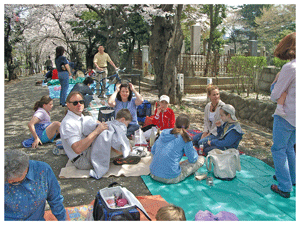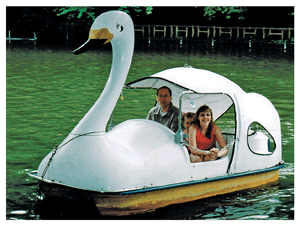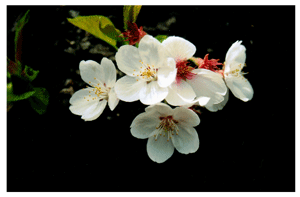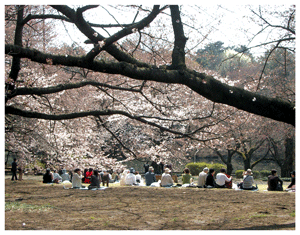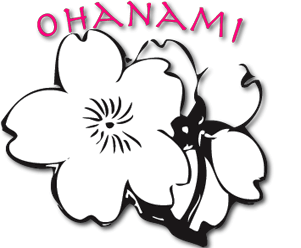
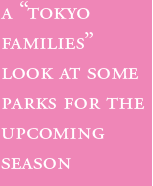
Sakura, the unofficial flower of Japan, is strongly associated with the spirit of this country. There are over 400 varieties of cherry trees, and references to sakura are abundant in literature through the ages. Many say that the blossom’s short life span represents fleeting beauty.
Ohanami (blossom viewing), dates to the 7th century when aristocrats wrote poetry about the sakura’s beauty. Ohanami has maintained its popularity over the centuries - on peak “viewing days” many Japanese companies send junior staff out early morning to hold their choice spot for the evening’s party. The blooming period varies slightly from year to year, occurring late March to early April. Weather forecasts report the advance of the sakura zensen (sakura front) moving from Okinawa to Hokkaido.
We have highlighted a few favorite family spots to enjoy ohanami, but of course sakura are to be enjoyed everywhere in Japan: local parks, schools, shrines, temples, river walkways….any place a cherry tree blooms! Gather your friends, set out your mat, and enjoy.
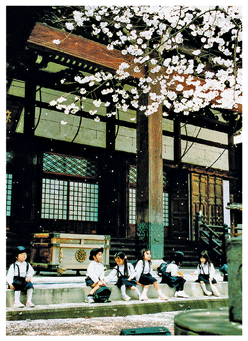
by: Valerie Sawatzky,
Louise George Kittaka &
Suzanne Davison
Inokashira Koen is a great family destination at any time of the year, and is especially lively on weekends when street performers and artists set up alongside the lake. Children may prefer to do their blossom viewing while cruising the lake in the swan shaped paddleboats. This park contains several different areas: playgrounds, a temple, large woodlands, and a small zoo across the street from the main park. Located in Kichijoji, a bustling area filled with shops and cafes, this park has much to offer.
2-32-2 Minami Aoyama, Minato-ku, Tokyo (03) 3401-3652
Nogizaka Station, Chiyoda Line. Gaien Station, Ginza Line.
Inokashira Koen is a great family destination at any time of the year, and is especially lively on weekends when street performers and artists set up alongside the lake. Children may prefer to do their blossom viewing while cruising the lake in the swan shaped paddleboats. This park contains several different areas: playgrounds, a temple, large woodlands, and a small zoo across the street from the main park. Located in Kichijoji, a bustling area filled with shops and cafes, this park has much to offer.
1-18-31 Gotenyama, Musashino-shi, Tokyo (0442) 47-6900. Limited parking.
Kichijoji Station, Chuo Line. Inokashira Koen Station, Keio Inokashira Line.
This park in West Tokyo has over 1800 cherry trees, and is a lovely place to visit during this season. It also boasts a huge playground, making it a wonderful choice for a family hanami picnic. (Kids can only appreciate so many cherry blossoms!) Speaking from personal experience-keep close to the kids, as it is easy to lose them among the play equipment.
1-13-1 Sekino-cho, Koganei-shi. Tel. 042-385-5611.
JR Chuo, Musashi Koganei station then to bus
no. 2 or 3 to the Koganei Kouen West Exit
(Koganei Kouen Nishi-guchi) stop. Large parking area,
but fills quickly at cherry blossom time.
Entry is free, open daily.
A green oasis in downtown Tokyo, this popular park consists of 58.3 hectares (144 acres) of manicured lawns and formal gardens. If it weren’t for the Shinjuku skyscrapers rising in the distance, you would think you were in England. There’s no playground here, so bring a ball or frisbee. (Just be sure to watch out for all the amateur photographers with their expensive equipment!) The wide variety of cherry trees makes for an unusually long viewing season—typically from late March until mid-April.
11 Naito-cho, Shinjuku-ku. Tel. 03-3350-0151
Shinjuku Gyouen-Mae station, Marunouchi line.
Shinjuku station (10 min. walk) .Parking area near the Okido Gate, but public transport is recommended.
Open 9 to 4.30, closed Mondays. (If Mon. is a public holiday, closed Tues. instead).
Adults ¥200, children 6 to 15 ¥50 yen, under 6 free.
English homepage: www.shinjukugyoen.go.jp/english/english-index.html
1. WHAT TO BRING
- picnic sheet
- picnic lunch (obento’s are easy and portable!)
- beverages of your choice
- garbage bags to take your rubbish away with you
- wet wipes
- camera
- frisbee or ball if you’ll be someplace with open space to play
2. INSIDER TIPS
- Don’t have time to pack a picnic? Several places will deliver food directly to you while you are enjoying the ohanami. Bring your cell phone and the number of your local pizza/katsu/bento delivery place and be prepared to meet the delivery person at an accessible entrance to pick up your lunch.
- Bring a small folding chair or cushion if you’ll be picnicking at a place with limited lawn space. Sitting on the gravel paths at Aoyama Cemetery can be bumpy!
- Some very popular places (such as Shinjuku Gyoen) get extremely crowded. Consider dressing your kids in bright primary colors (even the same color!) so that they stand out in the crowd.
- For babies or young toddlers, consider a light tent or cabana so the little one has some respite from the crowds and the colors, and will perhaps be able to take a nap.




